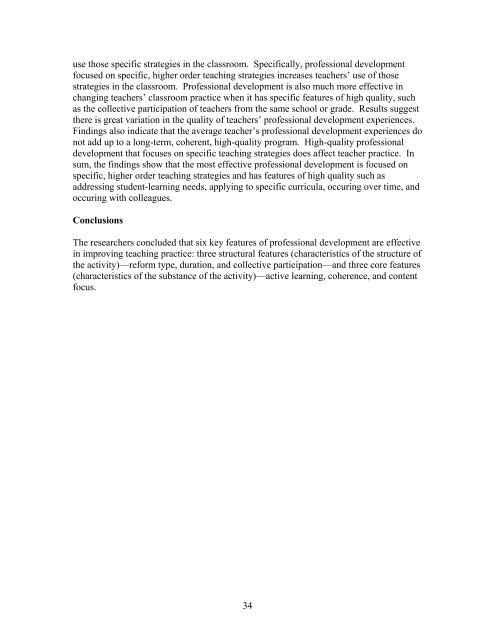Professional Development - Vol. IV, Part I
Professional Development - Vol. IV, Part I
Professional Development - Vol. IV, Part I
Create successful ePaper yourself
Turn your PDF publications into a flip-book with our unique Google optimized e-Paper software.
use those specific strategies in the classroom. Specifically, professional development<br />
focused on specific, higher order teaching strategies increases teachers’ use of those<br />
strategies in the classroom. <strong>Professional</strong> development is also much more effective in<br />
changing teachers’ classroom practice when it has specific features of high quality, such<br />
as the collective participation of teachers from the same school or grade. Results suggest<br />
there is great variation in the quality of teachers’ professional development experiences.<br />
Findings also indicate that the average teacher’s professional development experiences do<br />
not add up to a long-term, coherent, high-quality program. High-quality professional<br />
development that focuses on specific teaching strategies does affect teacher practice. In<br />
sum, the findings show that the most effective professional development is focused on<br />
specific, higher order teaching strategies and has features of high quality such as<br />
addressing student-learning needs, applying to specific curricula, occuring over time, and<br />
occuring with colleagues.<br />
Conclusions<br />
The researchers concluded that six key features of professional development are effective<br />
in improving teaching practice: three structural features (characteristics of the structure of<br />
the activity)—reform type, duration, and collective participation—and three core features<br />
(characteristics of the substance of the activity)—active learning, coherence, and content<br />
focus.<br />
34

















